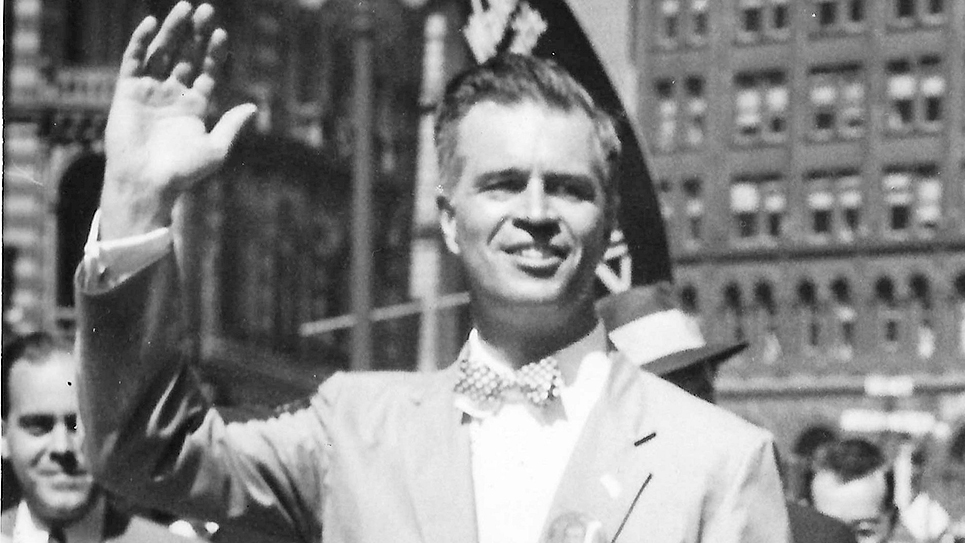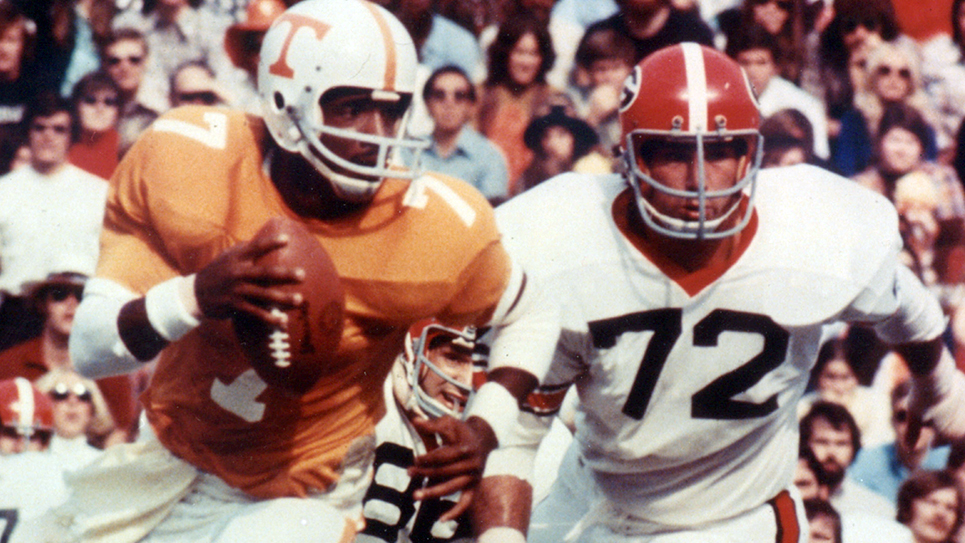By Tom Mattingly
Two weeks ago, there was a brief mention in this column of Tennessee and Alabama earning a two-page color photo spread in Sports Illustrated after the teams fought to a 7-7 tie at Legion Field on Oct. 16, 1965.
That was a big deal at the time and foreshadowed more of the same in the coming years.
Tennessee and Alabama were back in SI after the 1966 game, the one in the rain in Knoxville on Oct. 16. The Vols jumped ahead 10-0, but fell victim to an 11-point Alabama rally in the fourth quarter.
John Underwood wrote the SI story, titled “Surge by the Tide.”
There were color pictures of a Tennessee cheerleader standing alone on the cheerleaders’ ramp among a sea of umbrellas, Stabler firing the pigskin downfield early in the game (his pants had not yet been muddied), Alabama celebrating their first score, and the Tide rejoicing after Gary Wright’s missed field goal at the south end.
JOHN UNDERWOOD’S SUMMARY: “Tennessee, of course, will still be heard from. They are a fine young team, these Volunteers, with a fine young coach who is on the verge, after only three years on the job, of walking with the giants. Doug Dickey could even turn out to be Bryant’s successor as the best coach when Bryant retires.”
A year later on Oct. 21, the Vols and Crimson Tide again showed up as the magazine’s lead story, again written by Underwood. The story was titled “One Way to Dam the Tide.”
There was a cover shot of sophomore safety Mike Jones defending against the heralded Tide wide receiver Dennis Homan, a full-page shot of Bubba Wyche “carrying the football with ‘élan,’” and one of six or seven Vols putting the clamps on an Alabama runner.
It was Tennessee and Alabama, the Vols in orange and the Tide in crimson, just the way the football gods ordained it.
JOHN UNDERWOOD’S SUMMARY: “Doug Dickey didn’t allow himself the luxury of going particularly nuts after his finest victory, one that established his team as the South’s best. He is now among the cool and collected big-time winners, and he reacted like any good man would who has just beaten Bear Bryant. He was humble, but he smiled a lot.”
A year later, in the 1968 season opener against Georgia on Sept. 14, SI, led by staff writer Dan Jenkins and photographer Walter Iooss, Jr., was again present on a day for the McLains or the McClains, depending on your team loyalties. Jenkins headlined his story, “A Rouser on a Rug,” referencing the Vols and Bulldogs squaring off on a new-fangled surface on Shields-Watkins Field called Tartan Turf, a product of the company once known as Minnesota Mining and Manufacturing, better known as 3M.
Earlier that day, Denny McLain had won his 30th game for the Detroit Tigers, as the game at Tiger Stadium ended shortly before the Vols and Georgia kicked off at 4 p.m.
McLain and Tiger outfielder Al Kaline garnered the color shot on the cover, and Denny was shown on the interior with Dizzy Dean and Sandy Koufax. Lester McClain made his Vol debut as the school’s first African-American player, contributing a key catch on the Vols’ frantic drive for the touchdown and two-point conversion.
Gary Kreis was shown making the touchdown catch that narrowed the margin to 17-15, on the same page with Ken Delong roaring past Jake Scott (13) for the tying two points.
John Ward and Bill Anderson made their Vol Network debuts that day and nearly ran out of adjectives describing the action. The Vols had five color shots accompanying Jenkins’s story, posing an important question.
Do five color shots in the lead story trump one color shot on the cover?
DAN JENKINS’S SUMMARY: “Kreis, who had dropped three passes earlier, crossed over the middle and Wyche threw the ball to the goal line. Kreis grabbed the ball at the one-yard line, felt it slipping sickeningly from his grasp as he fell into the end zone on his back and then had it again when he hit the Tartan. It was two seconds after the zeros had flashed on the clock. But Tennessee still had to come up with a two-point play to get the tie. Wyche spread out his flankers again and fired over the middle again, this time hitting Ken Delong right in the belly at the one. DeLong was falling as he turned into the end zone, and before he could get up the whole state of Tennessee was swarming after him, stomping around and hollering on that synthetic turf about an ending to a game that wasn’t synthetic at all.”
These were significant times in the history of Tennessee Volunteers football. The Vols were reaching for the stars, and four major stories in Sports Illustrated helped them on their way.






